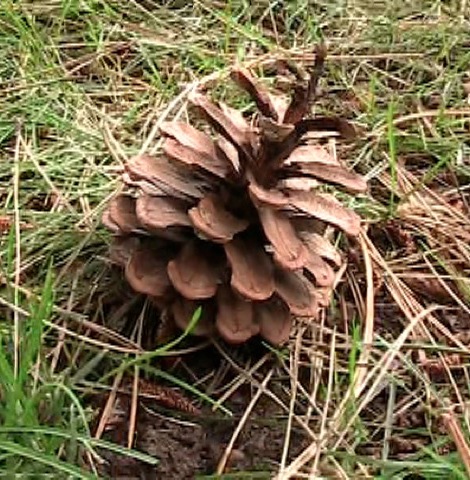| PSC 2620: Woody Trees and Shrub | Course Home | Week 13 |
Pinus nigra - Austrian Pine
Plant Viewer
 |
 |
| The stiff needles of Austrian Pine are 3-5 inches long and form in pairs. | The ornamental bark is a beautiful reddish-brown color and exfoliates in plates. |
 |
 |
| Cones are 2-3 inches long and a tapered ovoid shape. | The cones persist on the tree two years before opening and falling the second year. |
Plant Description
Pinus nigra, or Austrian Pine, is a large coniferous evergreen tree, growing 50-60 feet high and 20-40 feet wide. Young trees are dense and have a good pyramidal shape, but they become more spreading and flat-topped with age. Mature trees are often very open in form and have long branches with a gentle weeping form. They are quite adaptable to a wide variety of soil and moisture conditions.
The mature bark is reddish-brown in color and has a wonderful flaky nature which produces a rich texture composed of large plates. Younger bark has a scale-like appearance to it, is more true brown in color, and has the spent needle base still attached to it. The needles are 3-5 inches long, dark green in color and quite stiff. They form in pairs.
Small yellow-green cone-like flowers, or pollen cones, form at the base of the new growth (candle). They turn brown once they are spent and can often be found on the ground around the tree. The pine cones are 2-3 inches long and shaped like a tapered egg. The cones stay on the tree for two years, ripening and opening at the end of the second year. The scales protrude out from the cone and are tipped with a tiny point. The cone turns brown when it is open and is the prototypical pine cone.
Landscape Use
Austrian Pine is an attractive tree, suitable for use as a stand-alone specimen but more suited to clustering or use as an evergreen shade tree. It is effective as both a screen and wind break when you, but becomes less effective as it matures and becomes more open in nature.
Points of Interest
Pinus nigra has no serious pests or problems in our climate. However, its shallow root system can be disruptive to sidewalks or roadways.